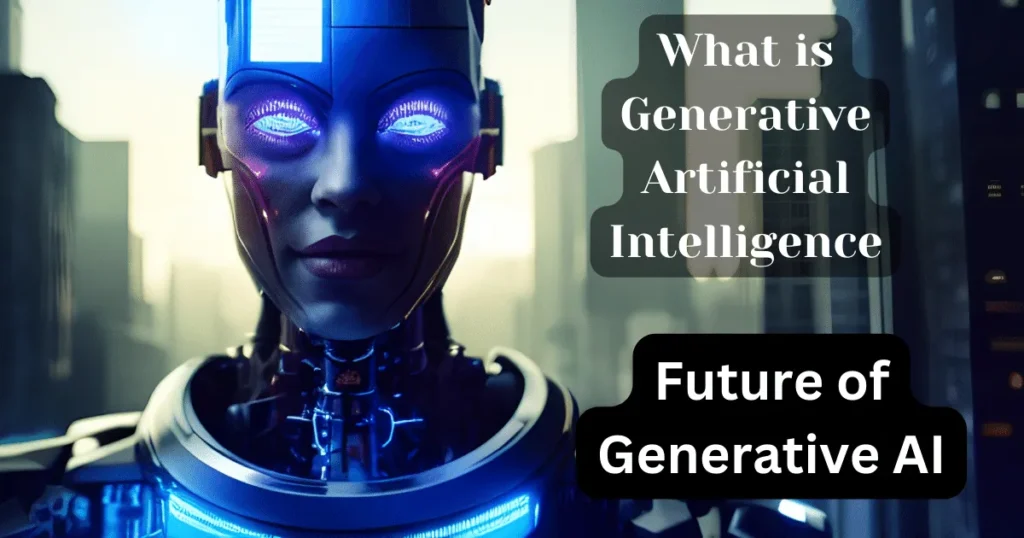Generative artificial intelligence (Generative AI) refers to a category of artificial intelligence systems. Which is designed to create text content, images, graphics, music, videos, etc. Which are often no different from content created by humans. Unlike traditional AI systems which are programmed to follow specific rules and instructions. Generative AI models are created using machine learning techniques. Which allows them to learn from large datasets and create new, original content. In this article let us know in detail What is Generative Artificial Intelligence?.
Fundamentals of Generative AI
Generative AI primarily relies on advanced machine learning algorithms, particularly deep learning models, to understand and replicate patterns found in data. The core technology behind many generative AI applications is a neural network architecture. Known as Generative Adversarial Networks (GAN), which was developed by Ian Goodfellow and colleagues in 2014.
GAN consists of two neural networks: a generator and a discriminator. The generator creates new data instances, while the discriminator evaluates them. The goal of the generator is to create such data. Which is so realistic that the discriminator cannot distinguish it from real data. Through this adversarial process, both networks improve over time, resulting in highly realistic generated content.
Read Also:- What is AI Prompt: How to Write Best AI Prompt Command
Types of Generative AI Models
Several types of generative AI models are widely used today:
- Generative Adversarial Network (GAN)
GANs are highly effective at creating realistic images, videos, and even 3D models. They are used in a variety of applications, from creating artwork to enhancing video game graphics. - Variational Autoencoder (VAE)
VAE is another type of generative model that is mainly used to generate data that closely resembles the training data. These are commonly used in image and speech generation tasks. - transformer
Transformer models, such as OpenAI’s GPT (Generative Pre-Trained Transformer) series, are particularly adept at producing human-like text. They are trained on huge amounts of text data and can create coherent and relevant sentences, paragraphs, or even entire articles.
Applications of Generative AI
Generative AI has a variety of applications in various fields:
- content creation
Generative AI can assist in creating written content, such as articles, blog posts, and even books. Tools like GPT-3 can generate consistent and contextually appropriate text, which makes them valuable to content writers and marketers. - art and design
Artists and designers use generative AI to create unique pieces of art, from paintings and illustrations to complex 3D models. AI-powered design tools can help generate ideas and automate repetitive design tasks. - Entertainment
In the entertainment industry, Generative AI is used to create music, create realistic animations, and develop immersive virtual environments. AI-generated content can enhance video games, movies, and virtual reality experiences. - health care
Generative AI models are being used in healthcare for drug discovery, medical imaging, and personalized medicine. They can generate potential drug compounds, improve the accuracy of diagnostic imaging, and tailor treatments to individual patients. - fashion
In fashion, generative AI can design clothes, predict fashion trends, and even create virtual fashion shows. AI-powered design platforms can help fashion designers come up with new styles and patterns.
Generative AI of use Challenges and ethical considerations
Despite its impressive capabilities, generative AI also presents several challenges and ethical concerns:
- Quality and authenticity
Ensuring the quality and authenticity of AI-generated content is a significant challenge. There is a risk of generating content that is misleading, inappropriate, or harmful. - Intellectual property
The use of AI to create content raises questions about intellectual property rights. Who owns the rights to AI-generated content – the user, the developer, or the AI itself? - bias and impartiality
Generative AI models may inadvertently maintain biases present in the training data. It is important to ensure that these models are trained on diverse and representative datasets to minimize bias.
Generative AI abuse
There is a potential for generative AI to be misused in creating deepfakes, fake news, and other malicious content. Regulatory frameworks and ethical guidelines are needed to reduce these risks.
What is the future of generative AI?
The future of generative AI has immense potential. As these technologies continue to develop, they will become more sophisticated and able to create even more realistic and complex materials. Advances in AI research will likely lead to new applications in areas we have not yet imagined. The future of Generative AI is very bright and full of possibilities. Here are some important points that indicate its future direction:-
- Changes in the creative industries
- content generation
- Virtual Assistants and Chatbots
- Entertainment and Gaming
- education and training
- business and finance
- Social and moral impact
- health care
